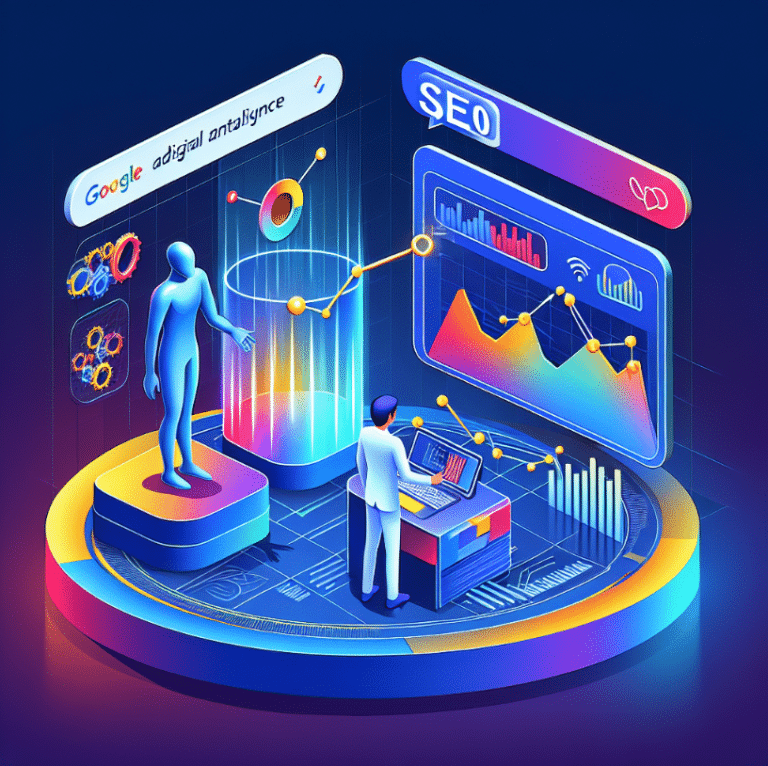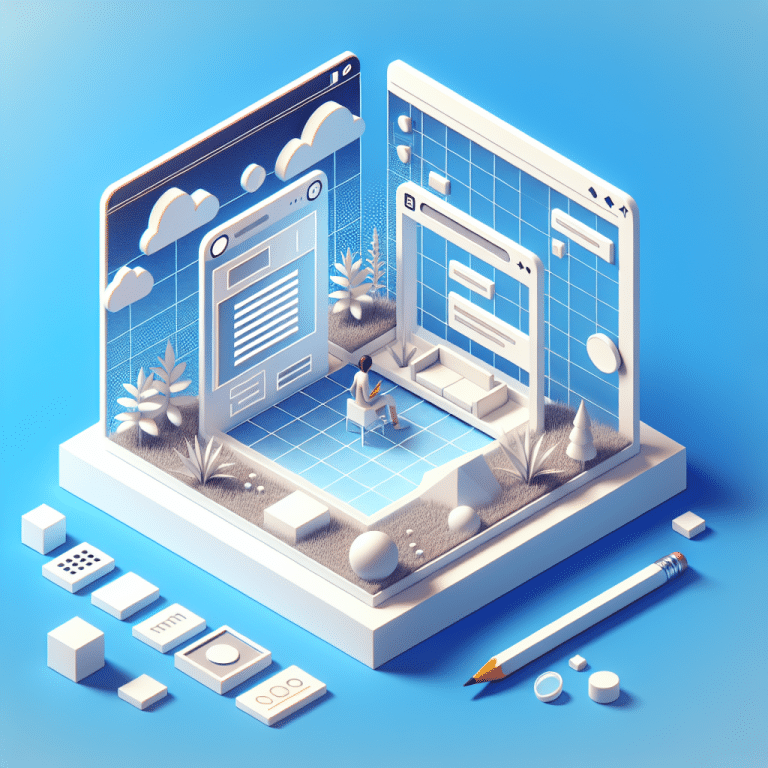What are the differences between web 1.0 web 2.0 and web 3.0? is there a web 4.0? Our whole world, our whole lifestyle, way of thinking and living, consuming… everything around us has changed more than you think with the evolution of the web. In this post we will review the evolution from web 1.0 to web 4.0 and how this has completely changed our society.
If there is one thing we can say that changes and grows every day at an exorbitant rate, it is undoubtedly technology. Not even the almighty Google is capable of covering and keeping up to date all the changes that occur within its browser. There are so many people using any technological product at the same time that, if the premises of those post-apocalyptic movies were fulfilled and there was “a big blackout”, the world would literally stop.
Everything around us is based on technology: from our mobile devices to which we dedicate so many hours a day, to the simple little light that indicates that the kettle is heating the water.
In fact, if we stop to think about it, technology has advanced more in the last 20 or 30 years than in the entire history of mankind.
But what has undoubtedly changed our lives completely in recent years has been the Internet. Very few people today can conceive of their lives without being connected to the network. Even the elderly, those who thought they would never need it, have had to adapt to new technologies. Nowadays, it is rare to do business that cannot be done through the Internet. Although let’s face it, web developers for “adult management” have a lot of room for improvement.
The technological evolution of web pages
The web has evolved more than we think in recent years; Internet, browsers, applications, operating systems, etc. are, in a way, new technologies. It is logical and normal that developers spend hours and hours to find possible improvements and technological advances. Not to mention the competition within the industry itself, or who has never heard of the war between iOS and Android to bring the best devices to market?
You don’t have to go back many years to remember when BlackBerry users thought they were the best because they had an internal chat system. Or how we had to ask for balance advances to be able to send a simple SMS. Something that today, just a few years later, is completely obsolete.
Focusing specifically on Web pages, we have to go back to the 1960s to learn about the predecessor of what we know today as the Web. This is none other than the Arpanet network, created by the U.S. Department of Defense as a communication network between different U.S. research institutes and universities.
By the way, I’m sorry to be the one to have to communicate this, but if you are still one of those who believe that the Internet was created to be used as a defense against military attack, it is a complete myth.
Before I start explaining the evolution of the web, let me give you an outline as a summary, so if you are one of those people who are in a hurry and can’t read a whole blog, you will have all the information at a quick glance.
The birth of Web 1.0
It was not until 1990 when the first web was created with the meaning we give it today, the web 1.0.
This website was a very simple static HTML system in which you could only consume content, but not interact with it. It was a purely one-way communication.
This website that very few people will remember today, not because many years have passed, but because it was not as common to have at least one device with Internet access per person in each house as it is today, has certain peculiarities worth mentioning.
- First of all, file storage was completely different. Nowadays, web pages should weigh as little as possible, and everything should be stored in an external database if possible. In the case of web 1.0 it was not like that, everything was stored within the server itself, so we can imagine how would be the loading time and weight of them.
- During the golden age of web 1.0 CMS did not exist, the almighty WordPress was not responsible for almost all the websites hosted on the Internet, as it is today. In those days, only the beloved and hated HTML was available in equal parts. A system that, let’s face it, makes it very difficult to be creative in terms of design.
- These sites were loaded with the so-called CGI operation. When users made a request on the web page, the data was not sent directly to the server, but first had to be processed by external software. Through a CGI interface, the data was transferred back to the server, which then generated an HTML document.
- But that’s not all. At that time, browsers tried to stand out by offering support for proprietary tags, creating serious incompatibility problems between websites that used these tags and non-compatible browsers.
- But if something was very popular at that time, it was undoubtedly the guestbook. Why not extrapolate something that accompanies us in our daily lives to the Internet world? In those days it was very common for websites to have an external “section” that stored user comments without affecting the performance of the web pages. We are talking, of course, about the predecessor of the comment box.
- What would a website be today without the contact form that helps companies to get leads? Web 1.0 was the predecessor of everything we know today and, of course, the contact form was not going to be less. At that time there were no contact forms as we know them today. When we wanted to contact any of the companies that provided us with this bidirectional information, we could only access their e-mail address. Thus, we had no choice but to go to our email server and contact in the most traditional (or innovative at the time) way.
The most popular websites we could find at that time were Netscape, AltaVista, AOL and Yahoo!
Web 2.0, welcome social networks
In 2004, Web 2.0 officially came into our lives, an era that many nostalgic millennials will remember for being the golden age of Internet forums or the first worldwide known social networks, such as myspace.
This website differs mainly from the previous one in that we leave behind the unidirectional communication to give way to a website in which users play a very important role. Much of the content was created by and for users.
It should be noted that the major difference between Web 1.0 and 2.0 is not so much at the technological level but at the interactive level. While it is true that there have naturally been many advances in terms of hardware, the way information is consumed would not change until several years later.
Many people may not be 100% aware of it, but the advent of Web 2.0 has completely changed societies around the world. Before welcoming social networks and independent media, people received information only through the press. We had no choice but to believe the news that journalists stationed in different parts of the world brought us with information about what was happening in the world. Perhaps people were not so aware at that time of the political manipulation of the press, but we had no choice but to blindly believe what they wanted to tell us, nothing more.
With the advent of globalization through social networks, forums or independent Internet media, our perception of the world changed completely. Many of us began to learn what was going on in societies and places that we couldn’t even put on the map before.
Web 2.0 and the great social change
But that was not all, and with the arrival of social networks and the ease of communicating from different parts of the world, a world of possibilities opened up for many people lost in the middle of the world. a classic and conventional society. Countless people around the world have discovered, thanks to the Internet, that their true vocation lies on the other side of the globe, drawing among Japanese mangakas, or that the music they really like is sung by a group of Koreans thousands of miles away.
And that’s the wonderful thing about the Internet; being able to have the possibility to enjoy what you like so much, without anyone judging you for it. And, above all, discovering that there are thousands of people out there who like the same things you do. Although, sorry to be the one to say it, it’s also easy to discover that you’re really not as unique as you’ve always believed yourself to be and humans are more similar to each other than we think, just in different parts of the planet.
Back to Web 2.0, technically speaking, it was time to leave the classic HTML for the most nostalgic and the first content management systems or CMS, with which the design and content management of a website was optimized, began to come to light. Thanks to the CMS, web page designs improved a lot, giving rise to what we know today as user experience, among other terms. With this new system, it was possible to independently manage the content, information and design of the website. You can freely change the design of it without having to transform the content. In addition, multiple publishers were allowed to upload content to the website, making things much easier for developers.
I could spend hours talking about Web 2.0 and how Twitter, Facebook, YouTube, wiki, blogs, Instagram, forums, etc. changed the world, but it is time to explain why the arrival of Web 3.0 is such an important change in the way we consume and transmit information.
The big change, the web 3.0
Although it may seem that Web 3.0 is something recent, the term was first coined in 2006, but it wasn’t until 2010 that we saw the real changes that were coming.
If I could describe Web 3.0 with two simple terms, it would definitely be interactivity and personalization. And this is precisely what distinguishes Web 3.0 from its predecessors.
The main feature of this new way of interacting with web pages is the storage of information in the cloud. This may not seem like a very significant change at first glance, but it is much more important than it seems. With this new system, connectivity between different devices begins; the possibility of accessing different databases from a computer and later from a mobile device, for example.
Now the user is 100% owner of the information handled by the web pages, because these cloud databases have a system of complexity and customization that constitutes a new method of adding semantic content to the documents that make up a web page.
But what is this semantic content?
The semantic language in Web 3.0 is nothing more than the “language” in which the information that users add to a website is written so that processors can interpret it. The idea is to move away from the limited HTML language to formats such as RDF, OWL or XML that are translated through information coming from the user, such as forms, images, catalogs, etc.
So what does all this seemingly not-so-big change entail? To nothing more and nothing less than content personalization.
The web has evolved so much that it has reached a point where it almost knows us better than our own mother. This aspect, however, is to some extent dangerous, but profitable if used responsibly. Who hasn’t seen an advertisement for something they were looking for? Who has never heard of Google listening to us? While it is true that this aspect continues to cause uncertainty in many people, including myself, for now we can not say if Google really controls each and every aspect of our lives or if it is simply about cookies. We will talk about conspiracies another day in another post, of course.
Web 3.0 has become a nest of information that offers us content adapted to our tastes and preferences. This at first glance may seem like something quite useful, the debate arises when we discover how large companies obtain this information. The fact is that there is a large market of data that ordinary users cannot access. But we must know that with every click we make on the Internet, we are leaving a large footprint of information that others will use to try to sell us things.
And that is how we arrived at Web 4.0.
While it is true that many of these Internet companies have had to deal with the consequences of commercializing user data, it seems that the way in which this information is used will not change for the time being.
Web 4.0 seems somewhat futuristic, but the truth is that it has been with us since 2016. In this new stage of the Internet, all the methodologies we knew until now are perfected and a key concept is added: artificial intelligence. Gone are the movies where futuristic robots invaded our world; artificial intelligence has been with us much longer than you think, but not as you think.
Artificial intelligence is nothing more than software that learns, to sum it up. To give an example, Google’ s proofreader is an artificial intelligence that has been with us for many years. Long gone are the days when Google’s literal translations seemed to be described by an illiterate robot. After years of learning by the users themselves, nowadays a text extracted from the Google translator could perfectly pass for a speech said by someone who, at the very least, speaks perfect English (although there are exceptions, of course).
Large Internet companies such as Microsoft, Google or Facebook are relying on Deep learning and Machine learning technologies to develop new information systems that would function in a similar way to the human brain.
Technologies such as Siri, Cortana or Alexa are based on such systems. While it is true that now we could indeed claim that our devices are always “listening” to us, ready to answer us when we say “Hello Siri”, these big companies are still claiming that the microphone theory is still on the minds of conspiracy junkies.
This type of technology has advanced so much that we can now entrust a software, by means of a simple phrase, to buy us a plane ticket or play us our favorite song.
And the best (or worst) thing is that these devices do nothing but learn and learn until they completely “know” our tastes, lifestyle, schedule, etc.
The advent of the Metaverse with Web 4.0
But of course, we can’t talk about Web 4.0 without talking about the so famous Metaverse. Web 4.0, also known as the symbiotic web, aims to blurring the line between human and machine. Create a virtual world where we can fully immerse ourselves and live our daily lives, without leaving home. Did the creators of Habbo Hotel imagine that one day their virtual reality would reach the level we know today?
This concept of virtual realities sounds interesting and appealing, but we must bear in mind that we are moving further and further away from reality and immersing ourselves in a world that, as we saw in Web 2.0, can completely change entire societies around the world. Enter the Metaverse responsibly, please.
Will there come a day when a device knows what we want before we even know it? What will Web 5.0 bring? Those answers and many more, years from now, when we meet again in web history part 2.
Before I go, let me allude again to people who have probably only looked at the images. I don’t think it’s fair to leave out the basic information, so here is a summary of the main features of each evolution of the web. Mind you, in part 2 I won’t be as good.











